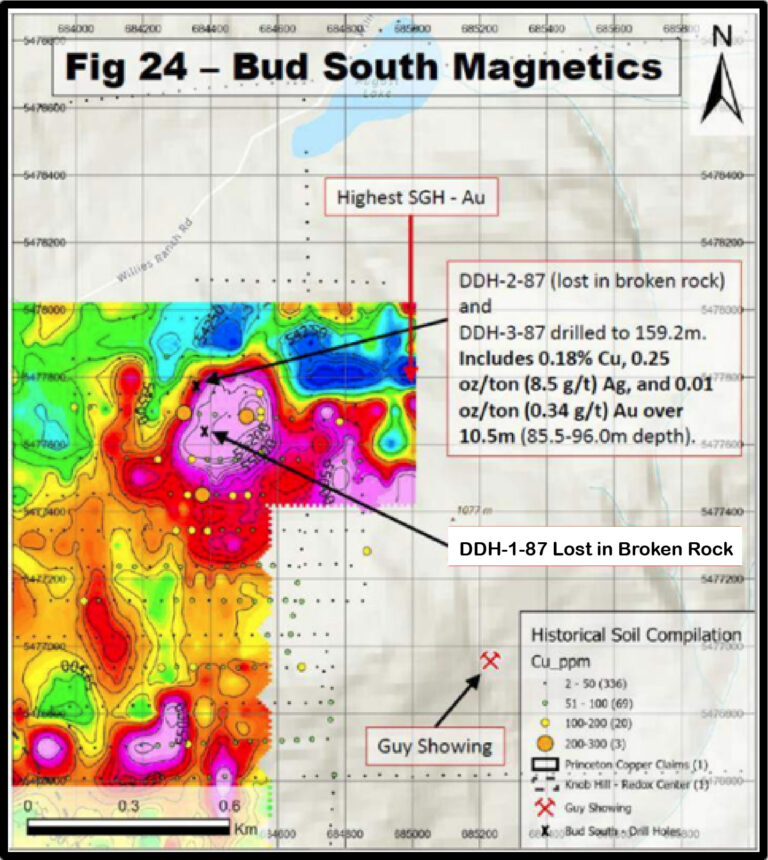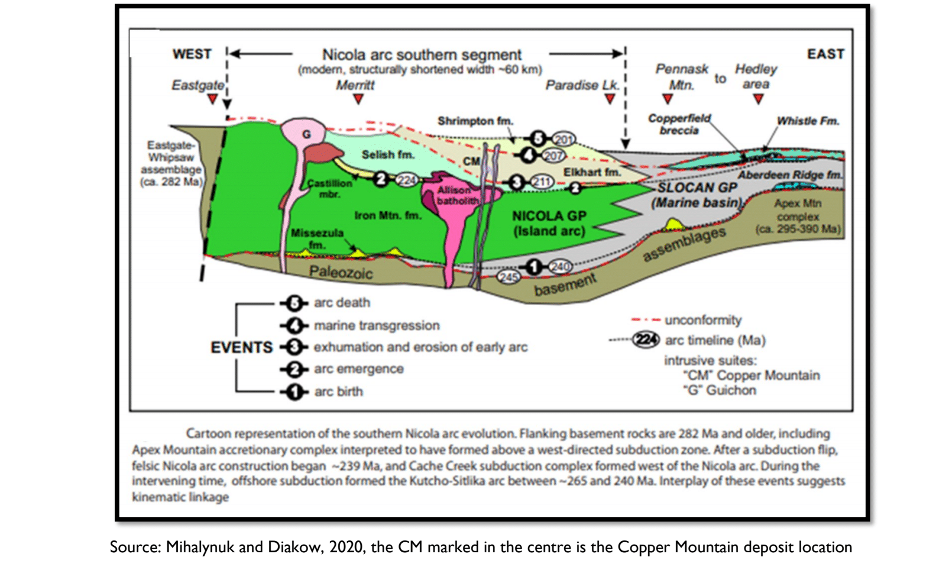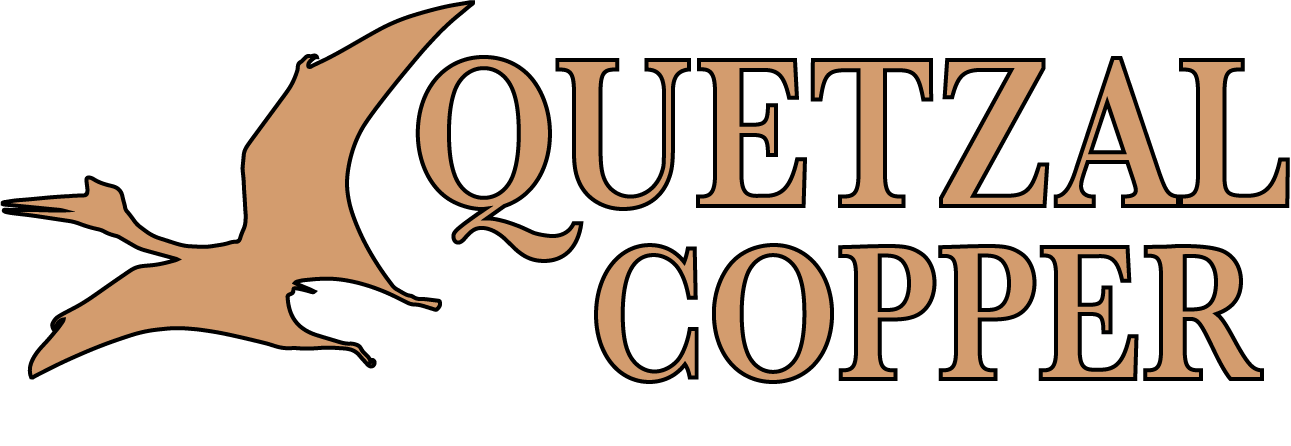Princeton project
British Columbia
Princeton Project By The Numbers
11,500
3
283 km
2
1

Princeton is Quetzal’s Listing Project and Main Focus in 2024
Princeton
The Princeton Project claims are immediately north of the Copper Mountain Mine. The work plan includes drill testing Bud South, Knob Hill, and Aura in 2024.
The project has an ideal location and prospective geology for copper porphyry exploration.
Geophysical and soil geochemistry surveys in 2020 and 2021 show multiple drill targets, by multiple survey types, which are consistent with porphyry copper deposits.
The Property consists of all the mineral tenures between the Copper Mountain Mine and Sego’s Miner Mountain property, plus a narrow extension to the south. This includes two historical minor “producers” active in the early 19th century, the Copper Farm mine, and the Mt. Holmes property.
Various operators conducted geological, geophysical (magnetics and Induced Polarization) surveys, geochemical surveys, stripping, and trenching during the past 60 years over parts of the Property.
Porphyry copper target areas include the six historic exploration areas. New targets include recently identified geochemical and geophysical anomalies outlined by the 2020 and 2021 exploration programs.
The three priority targets for Quetzal are Bud South, Knob Hill, and Aura. As you can see in the image below, Knob Hill is the southwestern-most occurrence. Bud South is the located approximately 2 km to the ENE of Knob Hill.


Bud South Target
The Bud South Target was identified in geophysics and drilled in 1987. Attempts to drill the anomaly in 1987 proved difficult.
Drillers lost holes DDH-1-87 and DDH-2-87 in the initial drill program. Hole DDH-3-87, drilled off to the side of the anomly, encountered anomalous copper and gold over 10.5 m.
The hole cut 11.6 m of intercalated fine-grained light green volcanic rock and unaltered fine to medium grained intrusive, containing quartz stringers and calcite, hematite, and pyrite along fractures. This section graded 0.184% Cu, 0.33 g/t Au, and 8.7 g/t Ag over 10.7 m.
A lower section of fine to medium grained tonalite/granodiorite exhibiting chlorite, epidote, and orthoclase alteration graded 0.149% Cu, 0.121 g/t Au, and 3.2 g/t Ag over 4.6 m.
In 2024, Bud South will be a primary drill target.
Knob Hill and Aura Targets
The Knob Hill showing is located 2km south of August Lake and consists of syenodiorite outcropping over an area of 1,000 m by 600 m and is reported to be related to the Early Jurassic Lost Horse Intrusion. Quartz-carbonate veins are reported to contain chalcopyrite with two grab samples reporting to assay 0.99 g/t and 0.51 g/t Au, 33.6 g/t and 49.0 g/t Ag, and 0.60% and 1.22% Cu respectively (Hopper, 1984).
Aura
The Aura anomaly is an area defined from soil geochemistry, Induced Polarization and geomagnetics that outline a target with similarities to the cores of porphyry copper deposits with a peripheral mineralized zone. These surveys also outline possible structural zones buried under the overburden.


The geophysical anomalies occur in conjunction with soil geochemistry anomalies.
The map shows anomalous copper values (red dots) in soil geochemistry across the Knob Hill and Aura targets. The larger the dot, the higher the value.
In addition to soil geochemistry, Knob Hill and Aura anomalies show up on multiple geophysical surveys. That’s why these targets are high-priority for 2024.

In cross section, the Knob Hill target shows a distinct, 300 m wide chargeability anomaly.
It sits in a zone of magnetic destruction within a broader resistivity high.

There are other potential areas in the 2019 to 2021 results that will require follow up and infilling of data to confirm their prospectivity.

Princeton Geology
An extensive area of Nicola Volcanic rocks is covered by likely shallow Eocene volcanic rock of the Princeton Group east of the Boundary Fault, on the western side of the Property. These younger volcanics likely blanket the volcanic strata of Late Triassic – Early Jurassic age and coeval intrusive rocks.
The deep-seated regional rift, the Boundary Fault zone, along the western edge of the Property remains highly prospective due to the proximity of many of the Copper Mountain deposits to this fault. Systematic exploration at Sego Resources’ Miner Mountain has outlined mineralized zones proximal to the Boundary Fault also.
Copper Mountain’s host rock is the Lost Horse Intrusive Complex. It consists of narrow diorite to monzonite dikes and breccias. The highly fractured and potassic altered Nicola Group volcanic rocks are important host rocks in the main pit.
Rocks of the Lost Creek Intrusive Complex, the origin of the Copper Mountain mine mineralization, occur locally on the Property. The area of the core of the Property northeast of the Copper Mountain mine has a number of areas with alkalic style porphyry mineralization.
This style of mineralization is common in alkalic porphyry systems. The image below compares Copper Mountain Mine with Cadia-Ridgeway in Australia:

The key takeaway are the multiple targets at depth in both models. They demonstrate why geophysics and drilling are critical to exploring alkalic porphyries. Geologists at the Copper Mountain Mine just made a new discovery below its New Ingerbelle locality.
The discovery, far deeper than the current mine, hit the highest grade and most gold-rich mineralization discovered at New Ingerbelle to date. The drilling highlights include:
- CM-DD-897: 191 m of 0.66% CuEq. (0.45% Cu, 0.32 g/t Au, 0.41 g/t Ag) from 722 m.
- CM-DD-896: 108 m of 0.76% CuEq. (0.59% Cu, 0.23 g/t Au, 2.13 g/t Ag) from 464 m.
- CM-DD-895: 42 m of 0.74% CuEq. (0.64% Cu, 0.13 g/t Au, 1.47 g/t Ag) from 480 m.
The company believes it’s comparable to the high-grade zones below Cadia Ridgeway and Red Chris, as you can see in the cross sections below:

The discovery of a deep zone under the New Ingerbelle showing at Copper Mountain Mine creates new possibilities for exploration in the region and particularly at the Princeton Project.
